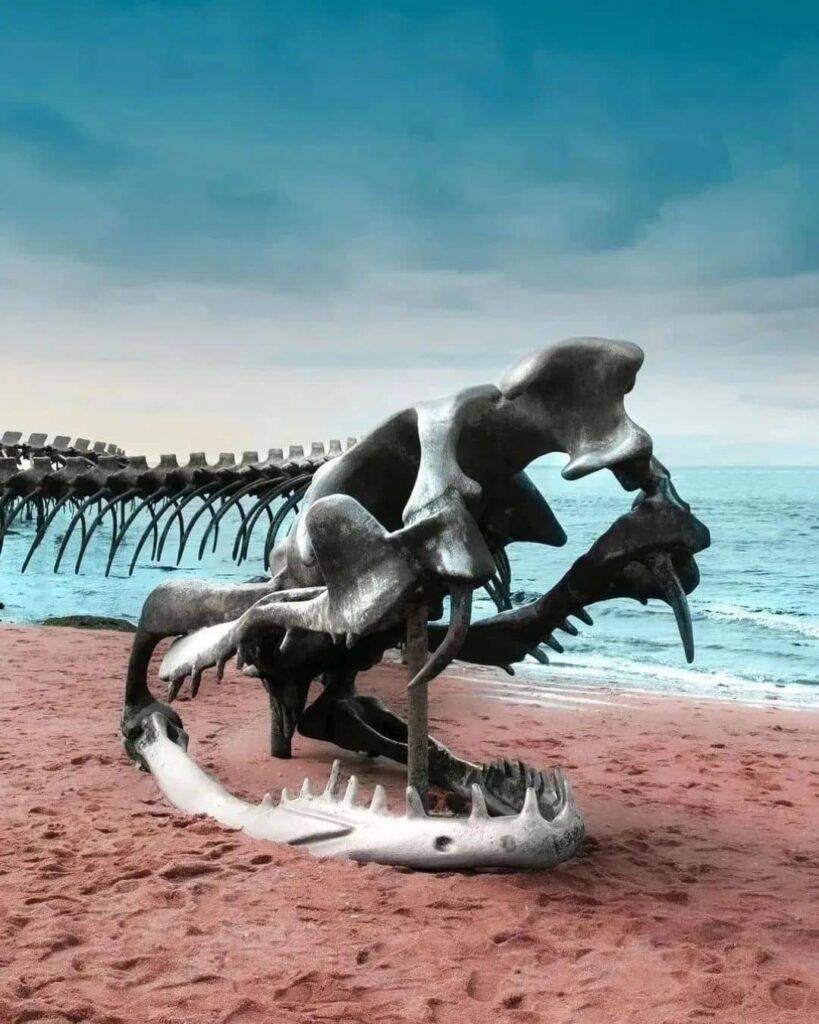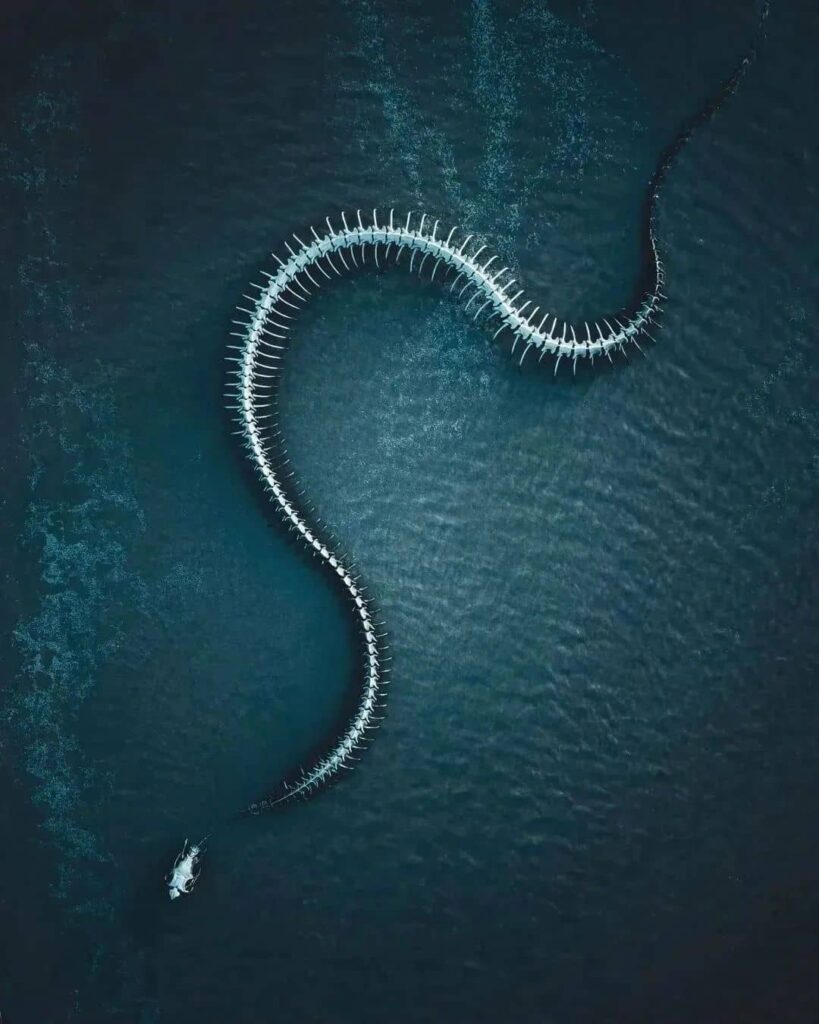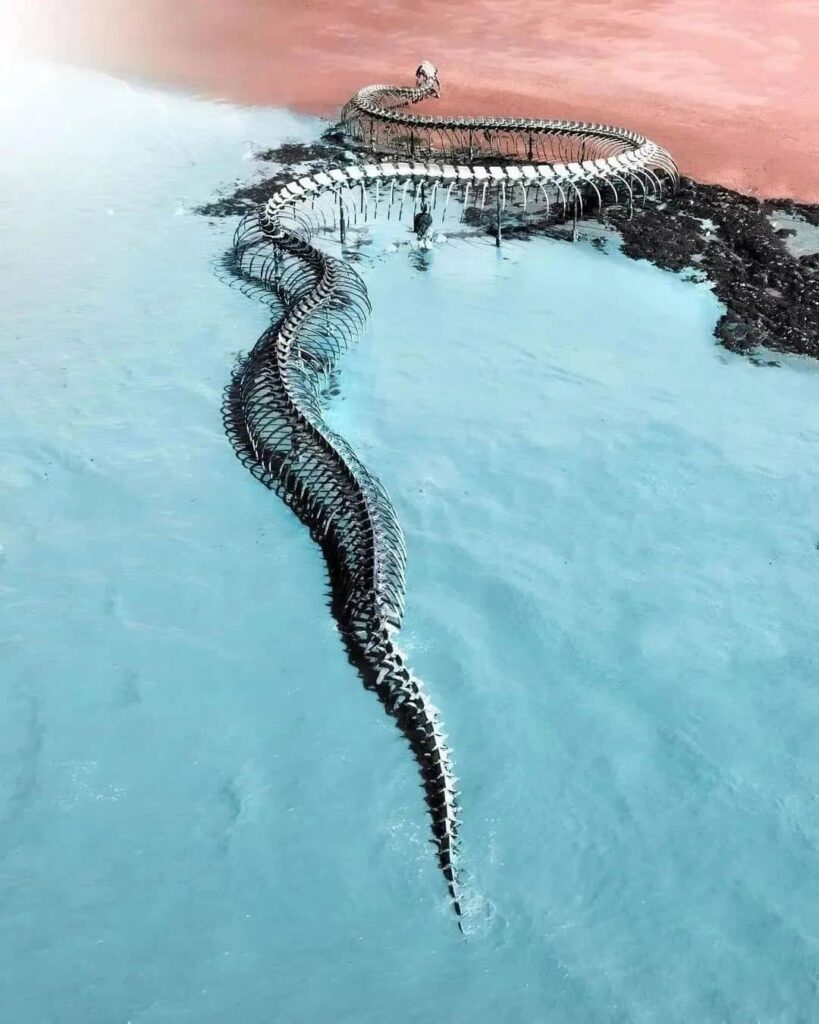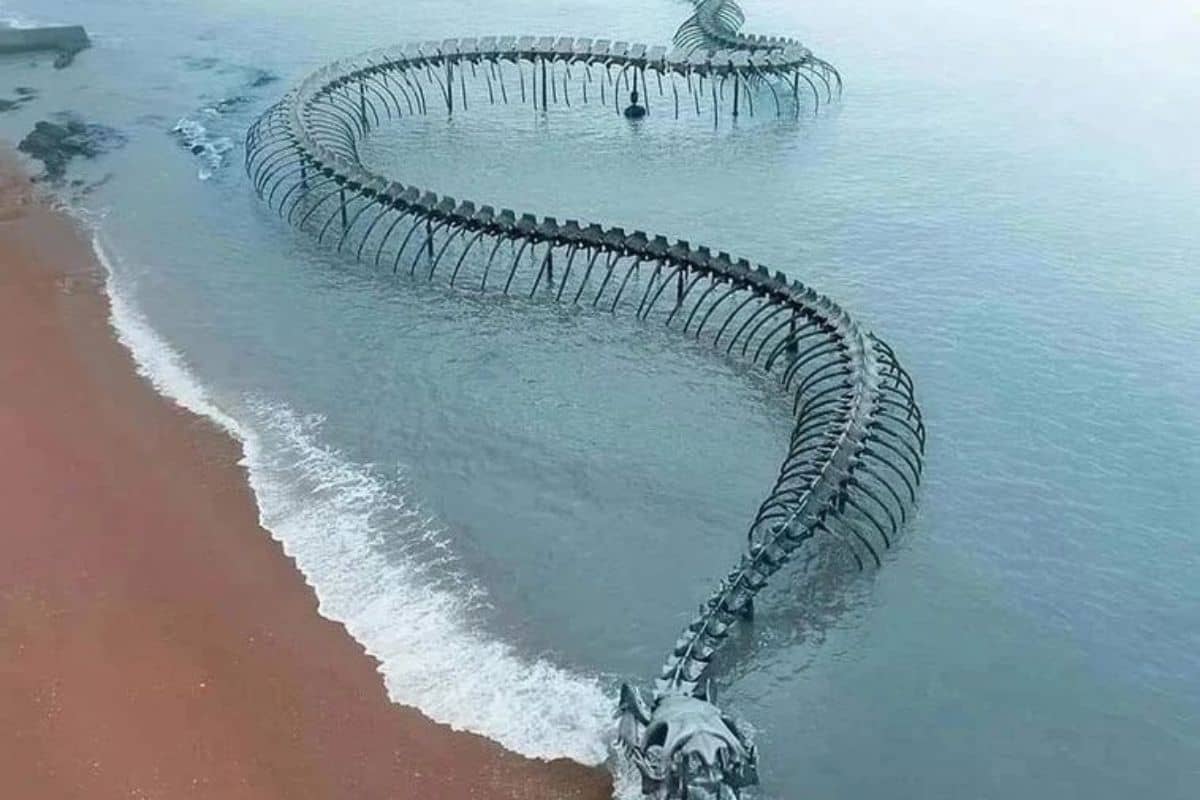In the French city of Nantes, a gigantic sea monster has emerged from the depths of the sea in the vicinity of the Loire estuary to greet visitors. The serpent d’océan in its full 130-meter-long glory. This awesome sculpture was completed in 2012 by the genius Huang Yong Ping, a Chinese-born French artist, and now is exhibited in Estuaire Art gallery.

This serpent sculpture looks to be made out of aluminum and only reveals itself to passers-by as the sea waves rise and fall. Located adjacent to the Saint-Nazaire Bridge, the sculpture and bridge bear significant resemblance with the spine of the serpent mirroring the arc of the bridge.
The 1980s, at the height of the Chinese cultural identity debate of the time, which is better known as the Chinese Avant-Garde exhibition, this was where Huang Yong Ping became a key figure. After many of his books were officially banned in China, he took up residence in France. Thirty years on and now a French citizen, Huang reflects on his art through the lens of a contemporary perspective. He was the first to bring Chinese mythology to Europe, from an astonishing angle.

Serpent d’océan reflects the cycle of nature and life, as the skeleton becomes visible and changes the sculpture as time goes by, season after season. As it fades into algae, it reflects on the aging of human beings across time.
Recently he created a 240 meter long sculpture surrounding the Empires in Paris titled as ‘His Epic Last Race’. It is enveloped by approximately 305 shipping containers, representing the churn of international commerce.
To the average eye, stumbling upon a hulking snake decaying away on the sand must seem like something straight out of a fable or monster myth. Media coverage of these events magnifies the spectacle and encourages interested members of the public to show up at the event in person. And they also serve as a reminder of the expansive watery unknown even deeper below the ocean — the area’s that home to creatures we virtually know nothing.

These events also illustrate the significance of marine conservation. The best way to make sure the animals in this study have the healthiest marine ecosystems is to preserve their habitats and federally protect all of their critical habitats. We can aid the balance of life in the ocean by doing so, and keep strange wash-ups from happening again in the future.






